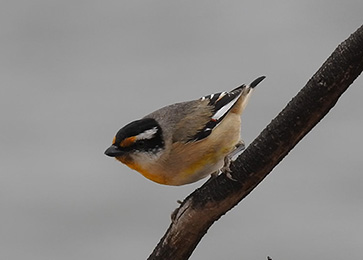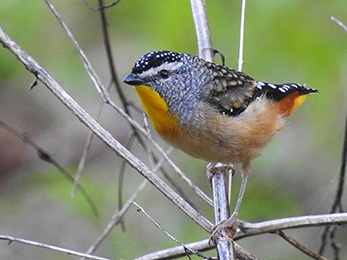PARDALOTES
Pardalotes are small, colorful birds belonging to the family Pardalotidae, and they are native to Australia. They are delightful and colorful additions to Australia’s avian diversity, and they play a vital role in controlling insect populations in their respective habitats.
Pardalotes are primarily insectivorous, feeding on small insects and their larvae. They forage for food in trees, shrubs, and on the ground, often searching for insects hidden among leaves and bark.
These birds are cavity nesters. All four species nest in deep horizontal tunnels drilled into banks of earth. Externally about the size of a mouse-hole, they can be 1 meter deep or more. Some species create their nests in tree hollows or other suitable cavities, such as termite mounds. Pardalote nests are typically well-hidden and can be challenging to spot.
There are four species of pardalotes found in the wild in Australia:
Forty-spotted Pardalote (Pardalotus quadragintus) is considered the rarest of the pardalotes and is found in Tasmania, particularly on the island’s eastern and south-eastern coasts. They are known for their distinctive white spots on their wings, and their plumage is a combination of white and pale green. The Forty-spotted Pardalote is highly territorial and prefers to inhabit dry eucalypt forests and woodland areas. Their call.
Red-browed Pardalote (Pardalotus rubricatus) is mainly found in eastern and south-eastern Australia, often in the coastal regions. They are named for the red stripe or brow above their eyes and have a greenish-blue plumage. Their call is a high-pitched, tinkling note.


